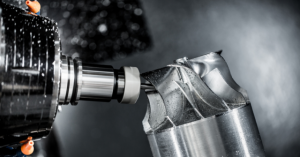
Spark Erosion & High-Speed Milling – Different Moulding Techniques Explained
Spark Erosion & High-Speed Milling – Different Moulding Techniques Explained
Almost all manufacturing facilities require moulds as moulds are a crucial component of the production process. In the MedTech industry, the manufacture of moulds is a highly specialised skill. The two most common techniques to make moulds are spark erosion and CNC milling.
High-quality mould makers, like us at Tool & Gauge, have moved more and more towards high-speed milling machines instead of standard CNC milling machines, in addition to offering spark erosion mould manufacturing. High-speed milling machines operate at up to 42,000 rotations per minute and are accurate to three microns.
Therefore, in this blog, we’ll look at the difference between spark erosion and high-speed milling.
Gerry Rafter is a Director at Tool & Gauge. Tool & Gauge is a specialist mould and tool manufacturer that has clients in the MedTech industry as well as in the automotive, aerospace, and electronics industries.
Spark Erosion
Spark erosion is a mould making technique that is also known as electrical discharge machining (EDM). The technique uses electrical discharges, more commonly referred to as sparks, to remove unwanted material from the mould in order to create the finished design.
The cutting tool is, therefore, an electrode. It operates very closely to the mould material, although nothing physically on the spark erosion tool touches the mould. In other words, there is no mechanical abrasion of the mould with the spark erosion manufacturing technique.
As there is no contact between the spark erosion tool and the mould, there is no distortion, even when working on intricate elements or with materials that are weak.
The spark erosion technique for making moulds offers a range of benefits. This includes:
- Can create intricate and complex shapes and designs
- Can create sharp corners
- Is able to drill very small holes
- Can produce a range of different surface finishes and is ideal for achieving a high standard of finish
- Is ideal for use on hard metals that are not easy to machine using other techniques
- Is able to cut cavities into metal that is pre-hardened with no need for any further heat treatment
- Perfect technique if the mould design requires fine tolerances using hard materials
High-Speed Milling
CNC milling is a technique that uses drilling to manufacture moulds. Unlike standard drilling processes, however, CNC milling is computer controlled and can operate on multiple axes and in multiple directions. This makes it possible to create a variety of mould designs, including moulds with slots and holes.
Newer CNC milling machines now come under the category of high-speed milling, where the machine operates at higher levels of rotation, enabling even faster production of the mould.
Spark Erosion or High-Speed Milling?
Both mould making techniques offer advantages, as shown above.
For the spark erosion technique, this includes the fact it can create almost any mould design. It is a much slower process, however, compared to high-speed milling.
While high-speed milling is fast, it does have downsides, particularly with some types of metal and when the design is complex. That said, modern high-speed milling machines mitigate many of these downsides, including making it possible to create many complicated and intricate designs.
The type of mould making technique best suited to your project will depend on the design and type of mould you need.
Find out more about Tool & Gauge by visiting it’s website.
